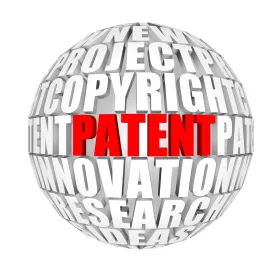In its Final Written Decision, the Board determined that Petitioner had demonstrated by a preponderance of the evidence that claims 1 and 3 of the ’920 patent are unpatentable.
The ’920 patent relates to a method of discriminating the sex chromosome in a sperm cell in order to facilitate sex selection in mammalian offspring produced by artificial insemination. The Board construed two terms of independent claim 1: (1) “said viable sperm cells” in step (e), and (2) “discriminating between said viable sperm cells having a desired sex characteristic at a rate of at least about 1200 sorts per second” (hereinafter “discriminating step”).
In its Decision on Institution, the Board had construed “said viable sperm cells” as referring back to the cells that were viable in a previous step, but does not convey intent to require that said viable sperm cells must remain viable through the cushioning step. The Board stated that this interpretation is broad, but unreasonable. The Board stated that a “skilled artisan would have recognized that some degree of cell death inevitably occurs during any method of sperm cell sorting and collection.”
Regarding the “discriminating step,” Petitioner asserted that the aggregate number of sorted cells (X and Y cells together) is the rate of “sorts per second.” Patent Owner asserted that only X (or only Y) cells are counted toward the rate, depending on which type of cell is desired by the person practicing the method. The Board agreed with Petitioner’s interpretation because it is consistent with how “sort” is described in the specification.
The Board had instituted review based on six grounds of obviousness: (1) claim 1 as obvious over Johnson and Rens, (2) claim 1 as obvious over Johnson, Rens, and Simons, (3) claims 1 and 3 as obvious over Johnson, Rens, and Touge, (4) claims 1 and 3 as obvious over Johnson, Rens, Simons, and Touge, (5) claim 1 as obvious over Johnson and Keij, and (6) claim 1 as obvious over Johnson, Keij, and Simons.
Patent Owner argued that Johnson fails to disclose a cushioning element that meets step (e) of claim 1, because the reference “lacks any discussion of altering the geometry of the collection container.” The Board was not persuaded by this argument because it is unsupported by the plain language of claim 1. The Board also agreed with Petitioner that Simons also bolsters the assertion that a protein source, such as the egg yolk extender disclosed in Johnson, in fact functions as a medium for cushioning said cells from impact with a collection container. The Board stated that Johnson discloses all but the “discriminating step” of claim 1.
As for Rens, the Board stated that Rens uses a MoFlo® high speed cell sorter. The ’920 patent specification states this cell sorter has “increased sorting speeds extraordinarily” to achieve “rates of sorting in the thousand and twelve hundred ranges.” The Board concluded that a skilled artisan would have been looking for ways to increase the way to increase the sort rate of Johnson’s method. The Board stated that “Rens explicitly discloses applying the MoFlo® high speed sorter to the flow cytometry technique developed by Larry Johnson.” Thus, the Board was persuaded that it would have been obvious to modify Johnson according to Rens. Thus, the Board concluded that claim 1 is obvious over Johnson, Rens, and Simons.
Further, the Board was persuaded by Petitioner that an ordinary artisan would have modified Johnson’s method to include the photodamage sorting technique taught by Keij. Patent Owner argued that certain cells would not survive the damaging effects of light leakage and accidental irradiation in Keij’s photodamage method. Patent Owner also argued that several factors would adversely impact the viability or sort rate when processing sperm with a photodamage sorter. The Board dismissed two of the asserted factors as based solely on opinion testimony uncorroborated by objective evidence. The Board determined that a skilled artisan would have modified the teachings of the prior art to address the other two factors. Thus, the Board concluded that claim 1 is unpatentable as obvious over Johnson, Keij, and Simons.
The Board also concluded that claim 3 is unpatentable as obvious over Johnson, Rens, Simons, and Touge. The Board stated that Patent Owner’s own witness testified that the use of angled containers for cell cushioning was well known in the art.
Patent Owner asserted non-obviousness of claims 1 and 3 in view of secondary considerations. The Board noted that Patent Owner failed to establish any commercial success attributable to the invention of the ’920 patent. The Board reached a similar conclusion regarding Patent Owner’s assertion of a long felt need for higher sperm cell sort rates. Thus, Patent Owner’s evidence of secondary considerations did not persuade the Board to find the claims non-obvious.
ABS GLOBAL, INC. and GENUS PLC v. XY, LLC, IPR2014-01449
Paper 26: Final Written Decision
Dated: January 11, 2015
Patent 7,195,920
Before: Grace Karaffa Obermann, Donna M. Praiss, and Michelle R. Osinski
Written by: Obermann



 />i
/>i

